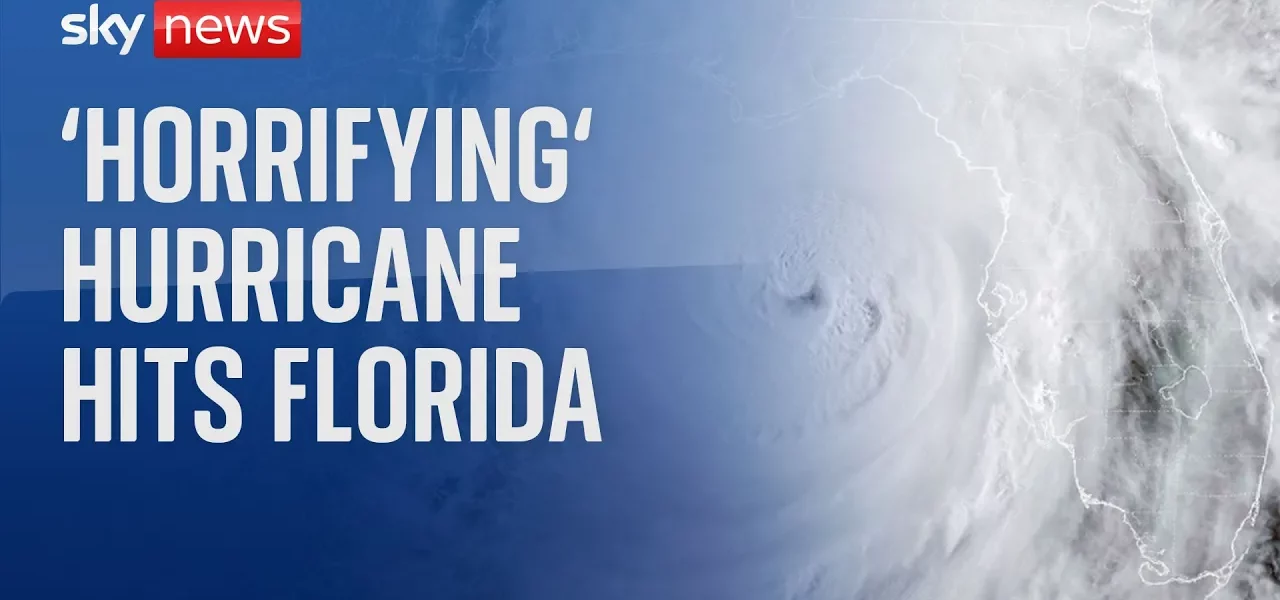Hurricane Helen: The Worst Storm to Hit Florida

Hurricane Helen has made history as one of the most catastrophic storms to ever strike Florida. With its rapid intensification into a Category 4 hurricane, the storm has brought unprecedented destruction and danger, prompting urgent warnings from authorities. In this article, we will delve into the details of Hurricane Helen’s impact, the necessary precautions residents should take, and the broader implications of such severe weather events.
Introduction to Hurricane Helen
Hurricane Helen has emerged as a significant weather event, causing catastrophic impacts across parts of Florida. Initially forming as a tropical storm, Helen quickly escalated into a powerful hurricane, fueled by the warm waters of the Gulf of Mexico. This rapid intensification has raised alarms, as the storm neared landfall with unprecedented strength. The hurricane’s destructive potential has resulted in severe warnings and mandatory evacuations, underscoring the need for preparedness and awareness among residents.
Understanding the Storm’s Development
The evolution of Hurricane Helen from a tropical storm to a Category 4 hurricane occurred in a matter of hours, showcasing the volatile nature of tropical weather systems.
Satellite Imagery and Storm Tracking
Satellite images played a crucial role in monitoring the storm’s development. These images revealed:
- Intensifying storm bands and the formation of a well-defined eye.
- Rapid wind speed increases, with sustained winds reaching dangerous levels.
- Significant storm surge predictions, leading to warnings of catastrophic flooding.
The Role of Warm Waters
The Gulf of Mexico’s warm waters acted as a catalyst for Helen’s rapid intensification. As the storm moved over these warmer regions, it absorbed energy, leading to:
- Increased wind speeds.
- Heightened moisture levels, contributing to heavier rainfall.
- Enhanced storm surge potential, with waves expected to reach heights of up to 15 feet.
The Impact of Hurricane Helen
As Hurricane Helen made landfall, the storm’s immediate effects were felt across the region. Authorities reported widespread damage, prompting emergency responses.
Destructive Winds and Rainfall
The hurricane’s winds were described as being akin to a tornado, with officials urging residents to take shelter. Key impacts included:
- Damaging wind gusts resulting in fallen trees and power lines.
- Severe flooding in low-lying areas, leading to road closures and evacuations.
- Reports of fatalities, including incidents caused by falling debris.
The Response from Authorities
In response to the approaching storm, local authorities implemented several safety measures:
- Mandatory evacuation orders for vulnerable areas.
- Emergency shelters opened to accommodate displaced residents.
- Public advisories emphasizing the need for preparedness and caution.
Survival Strategies During the Storm
As Hurricane Helen approached, experts emphasized the importance of safety and preparedness. Here are essential strategies for residents:
Evacuation Preparedness
Residents were advised to heed evacuation orders promptly. Key tips included:
- Have a go-bag ready with essentials such as food, water, medications, and important documents.
- Stay informed through local news and weather updates.
- Plan multiple evacuation routes in case primary roads are blocked.
Staying Safe During the Storm
If unable to evacuate, residents were urged to follow these guidelines:
- Seek shelter in a small, windowless interior room away from doors.
- Stay indoors and avoid using candles or open flames due to the risk of fire.
- Prepare for power outages by having flashlights and batteries readily available.
Conclusion
Hurricane Helen’s impact on Florida has been profound, showcasing the destructive power of nature and the importance of preparedness. As we reflect on the storm’s effects, it is crucial for residents to remain vigilant and prioritize safety. For those affected, recovery will be a long journey, but with proper planning and community support, resilience can be built. We encourage everyone to stay informed and prepared for future storms, as the safety of our communities depends on it. For more information on hurricane safety and preparedness, visit our related articles on emergency management and disaster recovery.
“`




